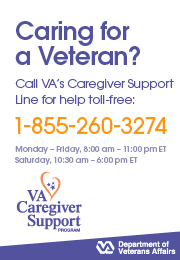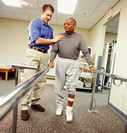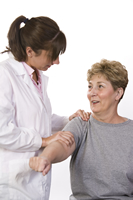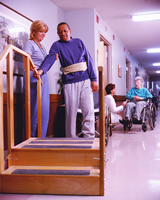RESCUE
HOME |
RESCUE
Fact Sheet Library
GENERAL STROKE INFORMATION
Stroke Rehabilitation
Stroke rehabilitation or “rehab” is
a key part of stroke recovery. It can help your loved one readjust
to everyday life after stroke. It can teach your loved one new
ways to do things.
Why Is It Important?
Stroke damages parts of the brain that affect everyday activities,
like walking and talking. Rehab can help your loved one relearn these
skills.
Rehab helps your loved one with:
- Personal care activities, such as bathing, dressing, grooming
and feeding
- Speech and language problems
- Interacting with others
- Memory and problem solving
- Walking and transferring, such as moving
from bed to chair
What Do You Need to Know?
Rehab does not reverse the effects of stroke. Instead, rehab
helps make your loved one stronger. It teaches him or her how to deal
with the changes. This will help your loved one achieve the best quality
of life.
What Is the Goal of Rehab?
The goal of rehab is to recover as much independence as possible. Rehab
helps the body heal. It helps improve physical, mental and emotional functions.
Recovery will be different for each person. Your healthcare team will
assess and determine your loved one’s rehab needs.
When Does Rehab Start?
Rehab begins when your loved one is medically stable. Rehab most often
begins in the hospital. It usually starts within a day or two after the
stroke.
How Long Will Rehab Be Needed?
Your loved one’s disabilities will determine how much rehab is
needed. Most gains happen in the first few weeks or months after stroke.
After that, recovery can still happen but it will be slower. For some
people, stroke recovery can be a life-long process.
Who Will Make Up the Rehab Team?
The rehab team includes various healthcare members. These rehab team
members will depend on your loved one’s needs.
| Physiatrist |
Medical doctor who specializes in rehabilitation; develops
a treatment plan focused on restoring function and pain control |
| Physical Therapist (PT) |
Works to improve mobility, strength and balance; helps with
moving and balance problems |
| Occupational Therapist (OT) |
Teaches patient daily living skills, such as bathing, toileting
and dressing |
| Rehab Nurse |
Coordinates care throughout rehabilitation; manages health
problems; provides education and support to patient and family |
| Speech Therapist |
Helps restore language skills lost due to stroke; provides
tips to improve swallowing problems |
| Recreational Therapist |
Helps patient relearn activities he or she once enjoyed;
teaches new activities |
| Psychiatrist or Psychologist |
Treats problems in thinking, memory and behavior; helps patient
adjust to emotional changes |
| Vocational Rehab Counselor |
Evaluates patient’s abilities to return to work; helps
patient get training and job skills |
Where Will Rehab Take Place?
Rehab can take place in different settings. Your healthcare team will choose the best setting for your loved one. Your loved one may receive rehab in multiple settings throughout recovery.
- Inpatient rehabilitation units – Patients stay in the facility and receive coordinated, intensive therapy. Stay is usually 2-3 weeks long.
- Outpatient rehabilitation units – Patients spend a few hours several days a week receiving therapy. Patients are medically stable and able to travel for therapy.
- Long term care – Patients are medically stable but require 24-hour nursing care. Includes nursing homes and skilled nursing facilities.
- Home-based rehabilitation programs – For patients who live at home but are unable to travel for therapy. Rehab takes place in the home.
How Do You Find Out About the Quality of Care at Rehab
Facilities?
Contact the Commission on Accreditation of Rehabilitation
Facilities (CARF). It accredits or gives a “seal of approval” to
rehab facilities. Look for the CARF certificate of accreditation
at the facilities you visit. If the facility does not have
one, it does not mean
it gives poor care. It is difficult to get accredited by
CARF. Those facilities that have CARF accreditation are
top notch. The More
Resources section
at the end of this Web page has contact information for
CARF.
What Role Do You Play in Your Loved One’s Rehabilitation?
Rehabilitation can be a long process. This can be frustrating
for your loved one. Your loved one will need encouragement. Listen to
his or her feelings and offer your support.
Helpful Tips
- Attend rehab sessions as often as possible with
your loved one. This will keep you informed of their progress.
Ask questions and talk to the rehab team about your concerns.
- Encourage your loved one to practice the new skills he or she
learns.
- Join a stroke support group to share rehab experiences with
others.
Remember
- The amount of rehab depends on your loved one’s disabilities.
- Stroke
recovery often is a life-long process. Your loved one
needs support and encouragement from family and friends.
More Resources
The following resources are related to this fact sheet only. View a full list of the resources from all RESCUE fact
sheets.
Commission on Accreditation of Rehabilitation Facilities (CARF)
Web: www.carf.org/public*
Phone: 1-520-325-1044
The Commission on Accreditation of Rehabilitation Facilities (CARF)
accredits or gives a “seal of approval” to rehab facilities.
Look for the CARF certificate of accreditation at the facilities you
visit. Find
an accredited facility near you.*
|
 |
Internet Stroke Center
Web: www.strokecenter.org/patients*
Phone: 1-314-362-3868
The Internet Stroke Center has detailed information on stroke, from diagnosis through treatment and rehabilitation.
|
My HealtheVet
Web: www.myhealth.va.gov
My HealtheVet (MHV) provides trusted information on stroke and other health conditions. It also provides resources for stroke caregivers and tools to track your loved one’s health.
Visit the My HealtheVet Caregiver Assistance Center for more information on caregiving. |
*Link Disclaimer: Links to information
and Web sites outside of the Department of Veterans Affairs do not
indicate an endorsement of products or services offered by the sites.
In addition, these sites may have privacy and security policies
that are inconsistent with those of VA.
Download
a free version of Adobe Reader to view PDF files. |
 References: familydoctor.org. (2008).
Stroke Rehabilitation. Retrieved December 15, 2008, from: familydoctor.org.
(2008). Stroke Rehabilitation. Retrieved December 15, 2008,
from: http://familydoctor.org/online/famdocen/home/common/heartdisease/recovery/151.html*.
American Stroke Association. (2008). Post-Stroke Rehabilitation.
Retrieved January 15, 2009, from: http://www.strokeassociation.org/presenter.jhtml?identifier=1041*;
National Stroke Association. (2006). National Stroke Association’s
Guide to Choosing Stroke Rehabilitation Services. Retrieved January
15, 2009, from: http://www.stroke.org/site/DocServer/Choose_Rehab.pdf?docID=1101*;
WebMD. (2007). Stroke
Rehabilitation: Concerns of the Caregiver. Retrieved
January 15, 2009, from: http://www.webmd.com/stroke/tc/stroke-rehabilitation-concerns-of-the-caregiver*;
Family Caregiver Alliance. (2008). Retrieved January 15,
2009, from: http://caregiver.org/caregiver/jsp/content_node.jsp?nodeid=578*;
Andaya, Christian. (n.d.). Getting
Involved: An Introduction to Rehabilitation for the Primary
Caregiver. Retrieved January 15, 2009, from: Caregiver.com,
http://www.caregiver.com/articles/print/getting_involved.htm*;
National Institute of Neurological Disorders and Stroke.
(2009). Post-Stroke
Rehabilitation Fact Sheet. Retrieved January 16, 2009, from: http://www.ninds.nih.gov/*;
Commission on Accreditation of Rehabilitation Facilities.
(2009). Retrieved January 28, 2009, from: http://www.carf.org/consumer.aspx?Content=content/about/providerlist.htm&ID=6*.

  These materials were created for the project:
Web-Based Informational Materials for Caregivers of Veterans Post-Stroke
Project Number SDP 06-327 funded by VA HSR&D Quality Enhancement Research Initiative (QUERI); Supported by the
Stroke QUERI
Visit the Stroke QUERI Website
|
























